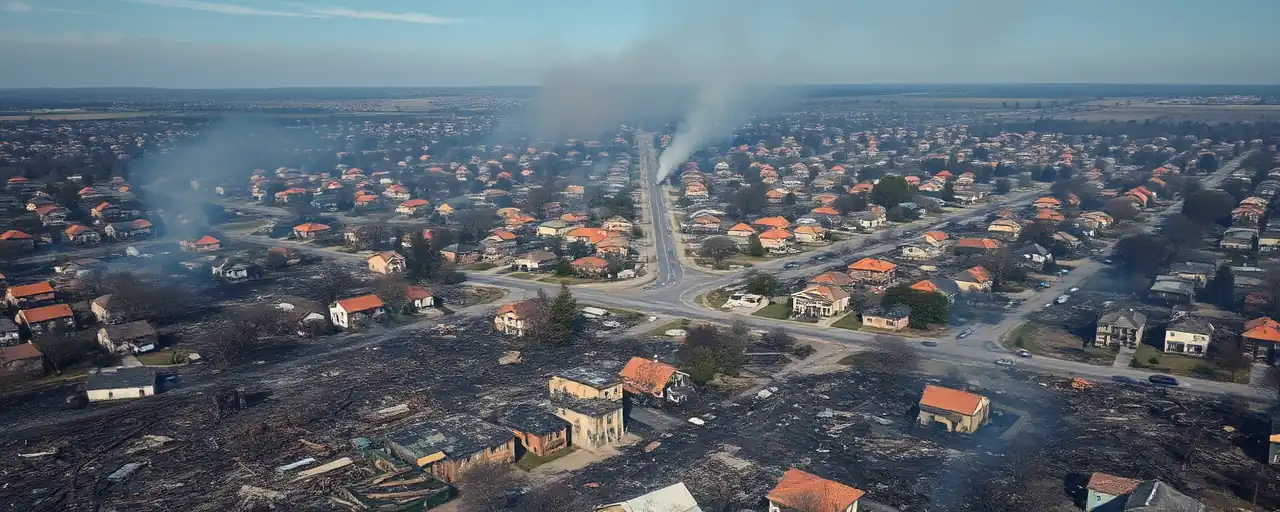A Community in Recovery
Los Angeles County is picking up the pieces after the Eaton and Palisades wildfires tore through neighborhoods, leaving ash and rubble in their wake. Nearly 500 crews are working nonstop, hauling away debris from over 1,700 parcels to help residents and businesses reclaim their lives. The U.S. Army Corps of Engineers leads the effort, navigating a tight timeline to clear hazardous materials before erosion risks worsen with seasonal rains.
With just days left until the April 15 deadline, property owners face a critical decision: submit a Right of Entry form to join the federally funded cleanup or take on the costly, complex task themselves. The program, expanded to include commercial properties, aims to ease the burden on a region already grappling with housing shortages and economic strain.
How the Cleanup Works
The cleanup process is a logistical marathon. Crews remove soot, ash, and structural debris, then stabilize sites to prevent mudslides. For homeowners, the program covers costs that might otherwise drain savings or insurance payouts, though those with debris removal coverage must reimburse the county for any overlap. Over 3,000 workers have cleared millions of tons of debris, with plans to wrap up by summer, months ahead of initial estimates.
Commercial properties, typically excluded from federal aid, now qualify under specific conditions, like posing public health risks or facing financial barriers to independent cleanup. This expansion reflects a broader push to rebuild not just homes but entire communities, though some owners worry about navigating the case-by-case review process.
Voices From the Ground
For residents, the stakes are personal. A single mother in Altadena described the relief of watching crews clear her lot, knowing she couldn’t afford the work herself. Yet others express frustration over paperwork delays or uncertainty about insurance claims. Business owners, newly eligible for aid, face tough choices: wait for approval or fund repairs out of pocket to reopen sooner.
Advocates for equitable recovery point out that low-income families and older adults often struggle to access aid due to language barriers or complex forms. Community groups have stepped in, hosting workshops at Disaster Recovery Centers to guide applicants, but time is running out to reach everyone.
A Bigger Picture
The wildfires’ impact stretches beyond burned lots. Over 16,000 structures were destroyed, wiping out billions in real estate and deepening the region’s housing crunch. Rebuilding faces hurdles—labor shortages, supply chain snags, and rising costs for fire-resistant materials. Some displaced residents are turning to temporary fixes like accessory dwelling units, while others consider relocating to less fire-prone areas.
Long-term recovery demands more than debris removal. Investments in forest health, defensible spaces, and resilient infrastructure are growing, with California committing over $6 billion since 2021. Federal disaster funding, topping $110 billion this year, underscores the scale of the challenge as wildfires grow more frequent and severe.
Looking Ahead
As the April 15 deadline nears, Los Angeles County stands at a crossroads. The cleanup effort has moved faster than many expected, offering a lifeline to thousands. Yet the clock is ticking for those still navigating the process, and questions linger about how to balance speed with fairness in reaching the most vulnerable.
Rebuilding will take years, but the work now lays a foundation. Residents, businesses, and policymakers face a shared task: not just restoring what was lost, but forging communities better equipped to withstand the next fire. For now, the focus remains on clearing the wreckage, one parcel at a time.
